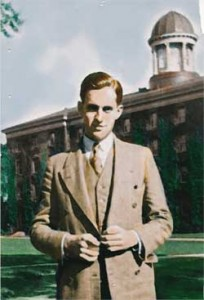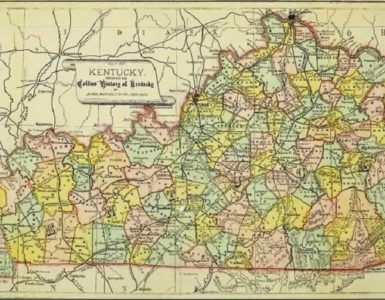 An area of the United States that has contributed greatly to national prosperity are the Great Plains. It extends from the Rio Grande River through Texas, New Mexico and Oklahoma, then on through western Montana and the Dakotas before ending in the Prairie Provinces of Canada. It is an immense region of fertile land that has fed the nation and peoples of the world throughout its agricultural history. The farmers, miners, sheep herders, and oilmen who lived in the plains found it challenging to obtain worship leaders for their churches because the small communities could not provide sufficient funds for a full-time pastor. The vast spread of the Great Plains required ministers willing to travel some distance between multiple congregations or preaching points and one of those ministers was David K. Myers, D.D.
An area of the United States that has contributed greatly to national prosperity are the Great Plains. It extends from the Rio Grande River through Texas, New Mexico and Oklahoma, then on through western Montana and the Dakotas before ending in the Prairie Provinces of Canada. It is an immense region of fertile land that has fed the nation and peoples of the world throughout its agricultural history. The farmers, miners, sheep herders, and oilmen who lived in the plains found it challenging to obtain worship leaders for their churches because the small communities could not provide sufficient funds for a full-time pastor. The vast spread of the Great Plains required ministers willing to travel some distance between multiple congregations or preaching points and one of those ministers was David K. Myers, D.D.
The story of Pastor Myers is told in his autobiographical Preaching on the Plains which has been edited and published by his son, honorably retired minister of the Presbyterian Church in America, Dr. David T. Myers. The book is a three-generation effort because a grandson contributed the prairie scene on the cover. There are thirty-one chapters of varying lengths and heading each chapter is a Bible verse anticipating the content of what follows.
Given the expanse of the Great Plains and its scattered congregations, ministers had to be willing to travel far and often. When Myers graduated Princeton Seminary with the class of 1929, he was ordained later that summer in rugged Miles City, Montana. His travelling was accomplished with the predecessor of modern sports utility vehicles, Henry Ford’s Model T. But Tin Lizzie did not last long because she was replaced with a new 1930 Model A. The dual call to Fairview, Montana, and Watford City, North Dakota were separated by a route of dirt and gravel roads extending forty-three miles. Dirt and gravel work well until rain or winter snow arrives. The trek between churches usually required about two hours, but sometimes conditions and car trouble stretched driving time. Pastor Myers covered 20,000 miles each year in the Ford. Summers were not exempt from hazards particularly when trying to navigate through the dirt clouds of the Dustbowl in the mid nineteen thirties. Myers knew there was a better way to travel, so for 1300.00 he purchased a Luscombe high-wing fixed gear airplane (like a Piper Cub). It was wonderful to fly quickly to a church and park in an adjoining field. A significant aspect of his ministry involved revivals in churches or holding tent meetings and the airplane allowed him to reach more distant towns. Some of his experiences flying are recounted in chapter 23 including an attempt to clear a fence at the end of a runway only to have the landing gear hang up in the wire and damage the plane while giving Myers a bloody nose.
Myers’s time studying at Princeton Seminary included participation in the controversy taking place within the Presbyterian Church between the groups designated modernists and fundamentalists. Myers was among the fundamentalists because he defended the divine origin and inerrancy of the Bible against critics. While studying with Professor of Old Testament Robert D. Wilson, he was one of the select few invited to attend the by invitation only advanced Hebrew class. His work in Hebrew contributed to doctoral work in Edinburgh where his thesis proposal defended Scripture in a university where only two of his forty classmates believed the Bible. A bonus of his Scotland sojourn was marriage. As the nineteen thirties began the Presbyterians were headed for the division which occurred in 1936 when several ministers left the Presbyterian Church to establish the Presbyterian Church of America (Orthodox Presbyterian Church). Myers initially served in the new denomination but when Carl McIntire, Alan MacRae, and others left to start the Bible Presbyterian Church, he joined the new denomination. Chapters 11, 20, and 31 address the work of Myers opposing critics of the Bible, leaving the PCUSA for the BPC, and teaching in the denomination’s Faith Theological Seminary in Philadelphia. Myers was the founding pastor of the first BPC church in the United States in Lemmon, South Dakota, November 4, 1936 (see, This Day in Presbyterian History, PCA Historical Century, for more information).
One aspect of the life and ministry of David Myers needs to be brought out for the sake of those contemplating the ministry and others who are struggling with their pastoral calls. During his first year of pastoring, Myers thought about demitting (leaving) the ministry. He called the time “the period of darkness” when he “could hardly continue.” But he remained because a church building was under construction and he did not want to leave the flock at such a challenging time. However, his attitude changed when he participated in a revival-evangelistic service and found counsel with the evangelist. The passage that exposed the reason for his depression was the vine and branches text of John 15. Myers realized what he was doing as a minister was “trying in my ministry NOT to be hated, but be a great backslapper, and have all men speak well of me.” It is really a remarkable statement because how many have failed in ministry because they wanted to be good old boys instead of branches of the Vine. Meyers’s trouble reminded me of something I heard some time ago from Theodore J. Jansma who said as he taught an introduction to ministry class that the greatest danger faced by new ministers is the natural but ministry-sapping concern to be liked.
Preaching on the Plains is not a book for deep theological insight, nor elucidation of the nuances of presbyterian polity, but it is an enjoyable read about a minister who labored faithfully.
Barry Waugh
Notes—The header image of a sod house located in southwestern Minnesota not far from the South Dakota line was taken by the author of this site, but unfortunately David Myers was on the other side of the Dakotas. Sod houses were used throughout the Great Plains. The portrait of Dr. Myers was provided by Wayne Sparkman of the PCA Historical Center; I could not figure out the building in the background, but it looks like either Nassau Hall at Princeton University or Alexander Hall at Princeton Seminary. The belfry of neither institution matches the one in the picture.





